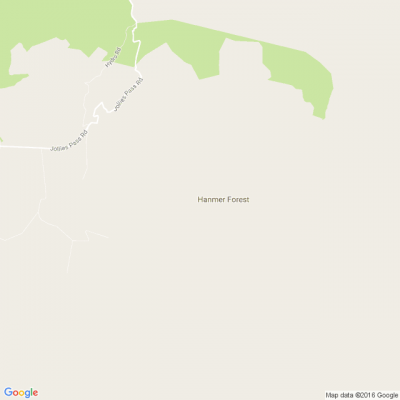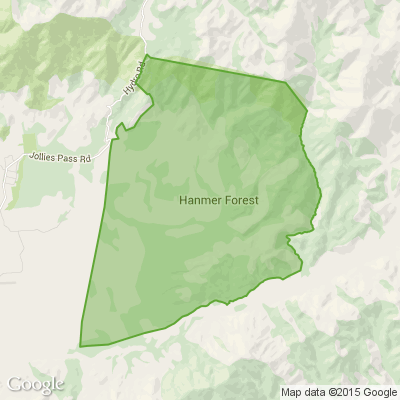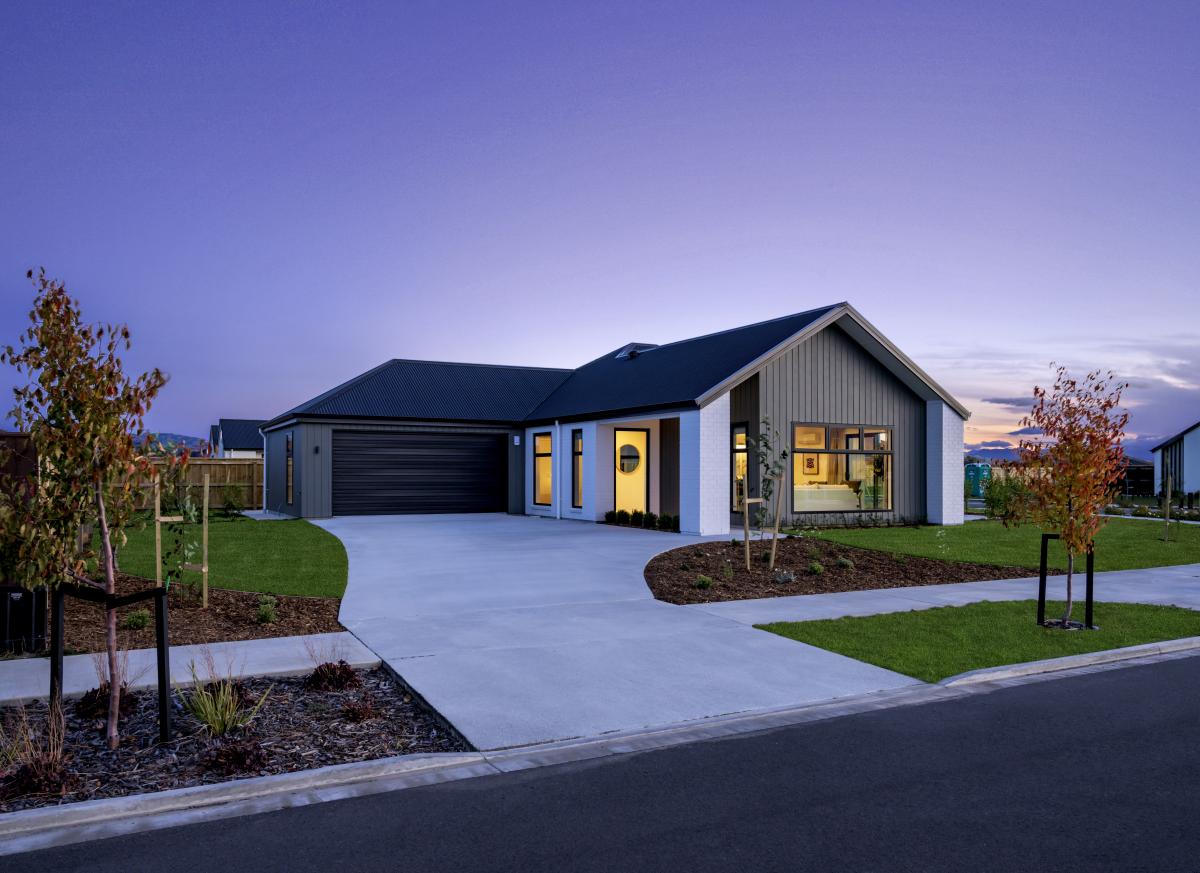
Know what’s happening
Access the private noticeboard for verified neighbours near you. Keep informed about any suspicious activity, send urgent updates to your neighbours when required and discuss emergency planning.
Get to know your neighbours
Browse the directory and start getting to know your neighbours. Don’t want to post to the whole neighbourhood? Send a private message.
Buy, sell and give away
Want to declutter your garage? Buy some used household items? Give away some garden stuff? Become a verified neighbour to browse and post items for sale. Trading is simple when everyone lives nearby.


Nearby
Hurunui DistrictHave a browse...
Check out what your neighbours are selling (or giving away!) here.

Thank you for using Neighbourly
You may receive an email confirmation for any offer you selected. The associated companies will contact you directly to activate your requests.
Trays are such a useful item to have in the home – they are obviously great for serving food and drinks, particularly breakfast in bed! Find out how to create your own with Resene wallpaper and Resene Colorwood wood stain with these easy step by step instructions. Find out more

Is the flooring at your school, early childhood, community or sports centre old and threadbare? Or perhaps you have a new space where there’s no flooring at all. Your organisation could be eligible to receive $2,000 + gst from the RhinoKids Flooring Fund to go towards new flooring. Plus, one … View moreIs the flooring at your school, early childhood, community or sports centre old and threadbare? Or perhaps you have a new space where there’s no flooring at all. Your organisation could be eligible to receive $2,000 + gst from the RhinoKids Flooring Fund to go towards new flooring. Plus, one lucky organisation will win a $20,000 flooring makeover!
Carpet Court is continuing its’ mission to help improve Kiwi kids’ learning environments by rolling out its’ nationwide fund for the fifth year in a row. Apply today!
Find out more

Charles Upham Retirement Village
Dreaming of a garden bursting with colour and fresh produce? Shane Fairbairn, Ryman Healthcare’s Landscape Manager, shares his top tips to make it happen. You’ll be set to create a gorgeous, relaxing space in no time - grab your trowel, and let’s dig in.
Click read more for more … View moreDreaming of a garden bursting with colour and fresh produce? Shane Fairbairn, Ryman Healthcare’s Landscape Manager, shares his top tips to make it happen. You’ll be set to create a gorgeous, relaxing space in no time - grab your trowel, and let’s dig in.
Click read more for more information.

Nicole Mathewson Reporter from The Press
By David Hill, Local Democracy Reporter
Some rates relief could be in store for Hurunui ratepayers next year as the council reconsiders its roading priorities.
The Hurunui District Council forecast an average 14.49% rates hike for the 2025-26 financial year in the 2024-34 long-term plan.
… View moreBy David Hill, Local Democracy Reporter
Some rates relief could be in store for Hurunui ratepayers next year as the council reconsiders its roading priorities.
The Hurunui District Council forecast an average 14.49% rates hike for the 2025-26 financial year in the 2024-34 long-term plan.
But after receiving a significantly reduced subsidy from Waka Kotahi NZ Transport Agency (NZTA), council chief executive Hamish Dobbie said staff are having another look at the roading programme.
‘‘In our long-term plan consultation, our residents signalled they wanted us to invest in our roads, so now it is about figuring out what is a wise investment with the funding we have.’’
He said the council will need to reconsider what it can afford to fund, based on the lower-than-expected subsidy.
The Hurunui council receives a 52% subsidy from NZTA on approved projects, with ratepayers paying the balance.
The council has met with NZTA since raising concerns about the funding it received in the 2024-27 National Land Transport Programme.
It had sought a 184% increase, but NZTA director regional relationships James Caygill said this was ‘‘unaffordable’’.
Dobbie said ratepayers were already paying two-thirds of the district’s roading budget as a number of projects were not funded by NZTA.
Options for a revised roading programme will be presented to the council to consider ahead of next year’s annual plan.
Dobbie did not expect rates to rise any more than the 14.49% signalled and will likely be less.
Funding has been reduced for low cost, low risk projects, which cost less than $2 million, so these will need to be reconsidered, he said.
‘‘It means the Government doesn’t value that type of work, so we need to consider how we value it.
‘‘The Government values the sealed road networks, so how do we allocate ratepayer money to those aspects of our network versus our unsealed roads.’’
Dobbie said Hurunui, a large rural community with around 13,000 residents, had about 900km of unsealed roads and 600km of sealed roads.
The council estimated it needs about $3 million a year to maintain and upgrade its ageing network of 286 bridges.
‘‘I think we have an understanding of what the issues are, but I wouldn’t say we are any closer to finding a solution,’’ Dobbie said.
He said he understood NZTA is restricted by Government funding.
‘‘This Government claims to be about infrastructure, so hopefully they can find a way to help us with intergenerational (or debt) funding and help us to pay it back.
‘‘We will pay our share.’’
Transport Minister Simeon Brown and NZTA have been contacted for comment.
■ LDR is local body journalism co-funded by RNZ and NZ On Air.

Buy any orange Resene testpot 60 ml at your local Resene owned ColorShop in November and Resene will donate $1 to Arthritis NZ!
The more orange testpots you buy, the more will be donated.
Find out more

Don't miss out! For only $15 a ticket, you could win this brand-new, fully furnished Jennian home located in breathtaking Blenheim, Marlborough.
Valued at over $1 million, this home features three bedrooms, two bathrooms, and an open-plan kitchen, living, and dining area. It’s waiting to … View moreDon't miss out! For only $15 a ticket, you could win this brand-new, fully furnished Jennian home located in breathtaking Blenheim, Marlborough.
Valued at over $1 million, this home features three bedrooms, two bathrooms, and an open-plan kitchen, living, and dining area. It’s waiting to be loved by its new owner.
Make this property your permanent residence, a holiday home, a rental, or simply sell it!
Get your tickets today at heartlottery.org.nz
Find out more

Mei Leng Wong Reporter from NZ Gardener & Get Growing
Love gooseberries? Share your favourite way to enjoy them. We're looking for our readers' favourite family recipes for this delicious crop. Send yours to mailbox@nzgardener.co.nz, and if we use it in the magazine, you will receive a free copy of our December 2024 issue.

113 replies (Members only)
Nicole Mathewson Reporter from The Press
By David Hill, Local Democracy Reporter
A North Canterbury beach community is set to get an early Christmas present to help in the fight against rising sea levels.
The Hurunui District Council has confirmed its plans to build a $750,000 coastal bund to protect the Amberley Beach village from … View moreBy David Hill, Local Democracy Reporter
A North Canterbury beach community is set to get an early Christmas present to help in the fight against rising sea levels.
The Hurunui District Council has confirmed its plans to build a $750,000 coastal bund to protect the Amberley Beach village from the sea, with work to begin this month.
Amberley Beach Residents’ and Ratepayers’ Community Association spokesperson Paula Le Compte said the announcement is good news for residents.
‘‘I know the entire beach community will be thrilled that it is going ahead.’’
A bund is a type of embankment which protects against the sea.
Le Compte said the area was important for fishing and recreation, while the village of 109 properties included a mix of home owners, rentals and holiday homes.
Chief executive Hamish Dobbie said he expected the new bund to be completed by Christmas.
The existing bund is owned by the community and was built in 1993, with the council acting as ‘‘a collector of funds’’.
The council was granted a consent by Environment Canterbury in March last year to build a new bund.
An Amberley Beach Coastal Adaptation Plan was adopted by the council in July last year, following extensive engagement with the community over three years.
The plan identified a number of options for the community to respond to coastal erosion, flooding and sea level rise.
These included a new, relocatable bund, while in the longer term other coastal protection measures or managed retreat will be considered.
The new bund was designed by the residents’ association and approved in August, after being peer reviewed.
It is expected to have a lifespan of 30 years.
The council voted in April to approve the use of debt funding to pay for the new $750,000 bund, with Amberley Beach residents paying for it through a combination of funds already saved and a targeted rate.
Residents approached the council earlier this year with a proposal to increase their targeted rate from $252 to $304 a year, which was included in the Long Term Plan.
The coastal adaptation plan has a clause where residents would need to consider another option, such as ‘‘proactive relocation’’, if the targeted rate for the bund exceeds $750 per household per year.
■ LDR is local body journalism co-funded by RNZ and NZ On Air.

Nicole Mathewson Reporter from The Press
By David Hill, Local Democracy Reporter
Recent rain has given drought-stricken farmers in Canterbury a boost, but concern remains, says Hurunui mayor Marie Black.
The Hurunui Adverse Events Committee met following the wet weather over Labour Weekend, with reports of between 50mm and 100mm of … View moreBy David Hill, Local Democracy Reporter
Recent rain has given drought-stricken farmers in Canterbury a boost, but concern remains, says Hurunui mayor Marie Black.
The Hurunui Adverse Events Committee met following the wet weather over Labour Weekend, with reports of between 50mm and 100mm of rain throughout the district.
‘‘It was pretty consistent. We were lucky that it fell across the district to relieve many worried farmers," Black said.
‘‘It is also really important to recognise that while it was termed as ‘a million dollar rain’, it hasn’t changed some of the issues farmers are facing with regrassing and the cost burden.’’
She said farmers have experience 11 months of no significant rainfall, with the Government declaring a medium-scale adverse event in March.
‘‘It was a timely and welcomed rain and it was sufficient to get some growth started.
‘‘But we have gone for a long time without significant rain. It has a creeping and insidious impact on the local community and the local economy as a whole.’’
Black said more is needed to ensure creeks and groundwater are properly replenished before summer sets in.
It is a busy time of year for farmers, with new spring lambs on the ground and farmers getting ready for shearing.
Farmers will be looking to cut some hay or baleage in the coming weeks as they look to rebuild their feed supplies, she said.
‘‘We need times of warm, dry weather and there are times when we need moisture. It is hard to get the balance right.
‘‘We will continue to monitor the situation and we have mitigation steps in place.’’
Events are being planned to encourage farmers to take some time off the farm and ensure they are kept informed, she said.
The Labour Weekend rain was not good news for everybody, with the Northern A&P Association’s Rangiora Show cancelled on the Saturday morning (October 26), as the rain tumbled down.
North Canterbury Federated Farmers meat and wool chairperson and Marble Point Station farmer Sara Black said she enjoyed ‘‘staying home and watching it rain’’.
‘‘There are a few lambs around, but because it was a warm and gentle rain, they would have pulled through.’’
Many farmers reduced their ewe numbers prior to lambing, while scanning results indicated there were lower lambing percentages this year, meaning there are less mouths to feed.
The Team from Neighbourly.co.nz
International members of the Mongols MC are expected in Canterbury for an event marking five years since the gang established itself in New Zealand.
What you need to know:
-The gang has three chapters in the South Island. Wainoni-based Ōtautahi East, Ashburton-based Mid-South and SH1, Burnham.… View moreInternational members of the Mongols MC are expected in Canterbury for an event marking five years since the gang established itself in New Zealand.
What you need to know:
-The gang has three chapters in the South Island. Wainoni-based Ōtautahi East, Ashburton-based Mid-South and SH1, Burnham.
- Police say they will have ‘considerable resource’ in the region during the event from November 7-10.
- Police in Canterbury have planned a major operation around the event - thought to coincide with a national meeting - from November 7 to 10, and have drafted in staff from two other districts to help.
- Mongols members from across the country are expected to meet at the gang’s original South Island headquarters - a fortified property on SH1, Burnham, on the outskirts of Christchurch.
- Canterbury district commander Superintendent Tony Hill says:
“We’re prepared for multiple contingencies. We will be monitoring their behaviour very closely over the period, if they’re not behaving appropriately then we will be taking appropriate action quite swiftly.”

No.1 Bayleys Canterbury Residential 2017 – 2024
Bayleys National Auction Award Winner – Three Years Running
We are specialists in residential and developments, including existing homes, townhouses and apartments, new builds, lifestyle sections and residential developments. From character … View moreNo.1 Bayleys Canterbury Residential 2017 – 2024
Bayleys National Auction Award Winner – Three Years Running
We are specialists in residential and developments, including existing homes, townhouses and apartments, new builds, lifestyle sections and residential developments. From character homes in Christchurch’s oldest suburbs to brand-new builds in one of the many subdivisions surrounding the city, we cover all the bases with equal dedication.
Find out more

Charles Upham Retirement Village
From rehabilitation after a hospital stay, to a little extra support, whether it’s for a few nights or a few weeks - respite care provides temporary care in a range of circumstances.
If you still live in your own home, a short stay at one of our care centres could be a welcome break from your… View moreFrom rehabilitation after a hospital stay, to a little extra support, whether it’s for a few nights or a few weeks - respite care provides temporary care in a range of circumstances.
If you still live in your own home, a short stay at one of our care centres could be a welcome break from your usual routine.
Our respite care is offered at rest home-level care, hospital and specialist dementia care. In some circumstances, we may be able to offer you respite care in a serviced apartment.
If you've been thinking about moving to a Ryman care centre, spending time with us in respite care is a great way for you to experience the lifestyle in our villages before making your decision.

Nicole Mathewson Reporter from The Press
By David Hill, Local Democracy Reporter
After a difficult few years, North Canterbury school principals say they have plenty of quality teachers to choose from.
A global teacher shortage in recent years has seen local schools competing against Auckland principals for staff at university … View moreBy David Hill, Local Democracy Reporter
After a difficult few years, North Canterbury school principals say they have plenty of quality teachers to choose from.
A global teacher shortage in recent years has seen local schools competing against Auckland principals for staff at university recruiting events.
But education advocate Simon Green said heading into term four, local primary schools were well placed ‘‘to fill their vacant positions from a good pool of quality applicants’’.
Green is the Rangiora High School board of trustees presiding member, and is a leadership adviser with Evaluation Associates, working with principals and school boards in Otago and Canterbury.
While there is a slight overall drop in primary school rolls in North Canterbury, he said more specialist structured literacy teachers were required.
Additional classroom release time for teachers meant relief teachers were also needed.
‘‘The secondary school job market remains challenging for our high school principals,’’ he said.
Rangiora High School has 22 vacancies for next year, mainly due to short term teaching positions, promotions and new opportunities opening up.
But principal Bruce Kearney said the positions are filling up fast.
The school roll is expected to close in on 1800 students next year, but Kearney said growth could begin to slow down, in the short term at least.
‘‘Our role can fluctuate depending on the rolls of our contributing schools and there is a sense we are seeing the end of a bubble.’’
Longer term that could change with new sub-divisions planned in the Waimakariri district.
‘‘We don’t want to grow much more,’’ Kearney said.
‘‘But I don’t think it would make economic sense for the Government to build a new secondary school on a new site when both Rangiora and Kaiapoi have land for more growth.
‘‘Communities may need to accept that big schools are more economical. Auckland has been managing schools of up to 3000 students for years.’’
Kearney said it was possible the Ministry of Education could build another primary school across the road from Rangiora High School, next to the school farm, in 10 years time.
Last year Kaiapoi High School had 22 vacancies to fill, but principal Jason Reid said he has just one vacancy advertised on the Education Gazette, for now.
For the first time in a decade Kaiapoi will have a slight dip in its year 9 roll for next year.
‘‘I don’t think it is indicative of anything other than a population blip,’’ Reid said.
With several contributing schools, including Woodend School and Te Kura o Tuahiwi, bursting at the seams, growth at Kaiapoi High School is set to continue for sometime yet.
For now, Reid is expecting the roll to remain at 1080 next year, just under the site capacity of 1100.
■ LDR is local body journalism co-funded by RNZ and NZ On Air.
Venetian plaster finishes are on-trend at the moment, so why not recreate this look at home and cover that unsightly rangehood at the same time?
Find out how to create your own with Resene Sandtex and these easy step by step instructions.
Find out more

Nicole Mathewson Reporter from The Press
By David Hill, Local Democracy Reporter
A new community board has been confirmed by Hurunui’s south ward.
The Local Government Commission has rejected an appeal against the establishment of a community board for next year’s local government election in the Hurunui District Council’s … View moreBy David Hill, Local Democracy Reporter
A new community board has been confirmed by Hurunui’s south ward.
The Local Government Commission has rejected an appeal against the establishment of a community board for next year’s local government election in the Hurunui District Council’s south ward, which includes Amberley.
Eleven objections were received, but just one, Amberley District Residents’ Association chairperson Roy Myers, gave an oral presentation to commissioners at a hearing last month.
Several objectors preferred the existing ward committee structure, which comprised representatives from residents’ associations, the Amberley Reserves Advisory Group, the Hurunui Youth Council and three independent members.
But the commissioners agreed with the council’s position that a community board elected by the community at large would be more democratic.
‘‘It may potentially attract candidates who may not have been traditionally in a position that would result in their becoming members of the ward committee,’’ the commissioners said.
South ward councillor Vanessa McPherson said she is ‘‘delighted with the outcome’’.
‘‘The decision reinforces the robust process undertaken by the council to deliver an outcome that will provide a fair and effective representation of benefit to the entire south ward.’’
But Myers said he is disappointed with the decision, which he believes is based on ‘‘wrong information’’.
‘‘The argument was that a community board would be able to be more strategic in its decision making.
‘‘But the existing ward committee doesn’t have any money to spend.’’
Hurunui mayor Marie Black told the commission a walking and cycling fund of $370,000 has been established from development contributions since 2010, but the ward committee has been unable to agree on how to spend it.
But Myers rejected this and said the ward committee was unaware ‘‘we were able to spend it’’.
‘‘How are these five representatives going to be in contact with the community?
‘‘Under the present structure, you have residents’ groups which represent their communities.’’
While the new community board will have five board members, the commissioners reduced the number of elected councillors on the board from four to two.
The commissioners’ also recommended a Hurunui Youth Council representative be appointed as an observer.
Remuneration of board members would cost $36,078 a year, or $20 per south ward ratepayer per year.
■ LDR is local body journalism co-funded by RNZ and NZ On Air.

 Loading…
Loading…
Are you sure? Deleting this message permanently removes it from the Neighbourly website.
 Loading…
Loading…
© Neighbourly 2025
